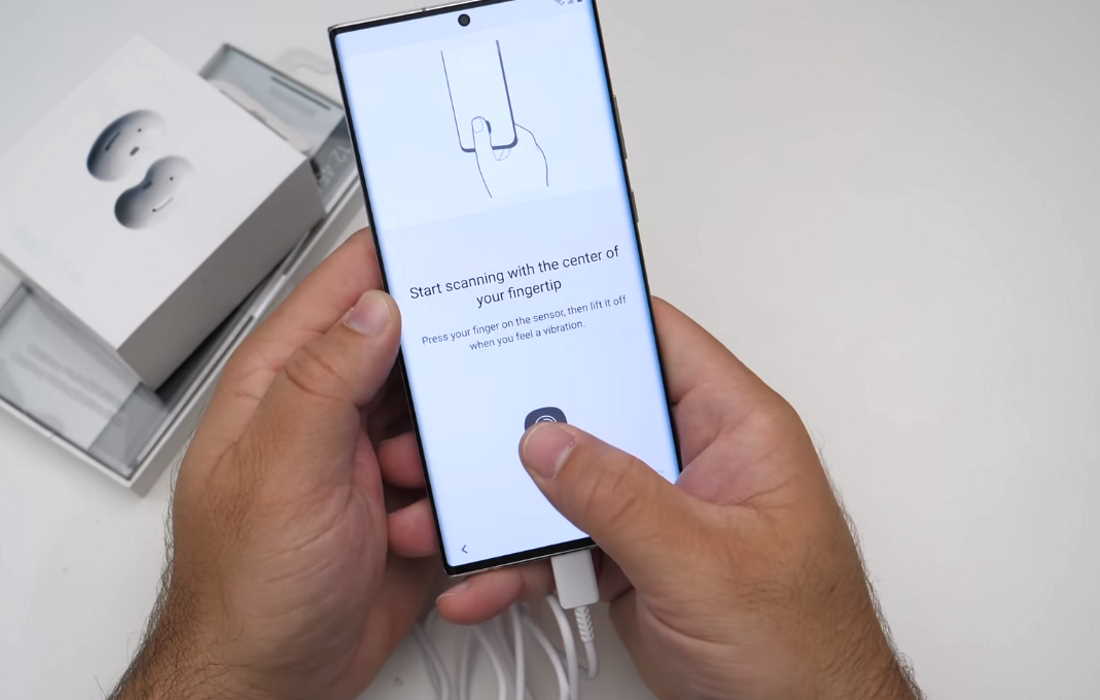Fingerprint scanner not working on your Samsung Galaxy Note 20 or Note 20 Ultra? Is your fingerprint not detecting despite setting up correctly? Many individuals reported of fingerprint sensor unable to detect fingerprints on their new Galaxy Note 20 and they have no clue why.
The fingerprint sensor problem can be due to number of factors and that is exactly what we are going to discuss in this article. Read on.
Why Fingerprint Scanner is Not Working on Galaxy Note 20?
Below are probable causes why fingerprint sensor may not work on your Galaxy Note 20 or Note 20 Ultra.
- Using wrong finger
- Your finger is too wet or too dry
- Scar or wrinkle on your finger
- Damaged fingerprint sensor
- Dirt on the fingerprint sensor
- Scratches on the screen protector
- Incompatible screen protector
- Software/firmware malfunction
How to Fix Fingerprint Not Detecting Problem on Galaxy Note 20 and Note 20 Ultra
You can try the following solutions to fix fingerprint sensor issues on Galaxy Note 20 and Note 20 Ultra.
1. Clean the screen
Sometimes the dirt in the screen can cause the screen to become unresponsive. This can have direct impact on the fingerprint sensor as well. Take a soft, dry and lint-free cloth dampen with alcohol solution and gently clean the screen, wiping out any dust or smudge on the screen. After you have done that, try the sensor again and see if it works. If it doesn’t, proceed on to the next solution.
2. Remove screen protector
Low quality screen protectors can affect the touch sensitivity of the screen and interfere with fingerprint sensor. Take off the screen protector and try the sensor again and see if it works. If it doesn’t, try the next solution.
3. Increase screen sensitivity
Sometime increasing the touch sensitivity of the screen can resolve the problem and compensate for the use of screen protectors. Follow the steps below to increase screen sensitivity on your phone.
- Open Settings from the home screen or from the notification panel by clicking the gear icon.
- Tap on Display
- Tap the Touch sensitivity and toggle to ON
4. Delete old fingerprints to add new one
Your old fingerprints may no longer match with your current fingerprints. Many factors can change your fingerprint. This can happen in the following scenarios.
- You have restored and transferred fingerprints from an old device to a new one
- You have moved to a new place that is too cold or too hot
- Your fingers have got scarred or wrinkled overtime
In such cases, removing the old fingerprints and registering your fingerprint again can fix the problem. Follow the procedures below to delete and add new fingerprints on your device.
Steps to delete old fingerprints:
- Go to Settings
- Scroll down and tap on Biometrics and security
- Tap on Fingerprints
- Type in the PIN, Password, or Pattern when prompted
- Select the fingerprints to remove. To select all, touch and hold a fingerprint then select All from the upper-left corner
- Tap on Remove (top right corner). Then confirm to remove
Steps to add new fingerprints:
- Go to Settings
- Tap on Biometrics and security
- Tap on Fingerprints
- Type in the PIN, Password, or Pattern when prompted
- Tap Add fingerprint. Enter the current PIN, Password, or Pattern if prompted
- Follow the on-screen tutorial to scan your fingerprint
- Tap Done to add the fingerprint
Note: Ensure the screen protectors are removed from the phone and your fingers are cleaned properly before proceeding with the new fingerprint registration.
5. Wipe cache partition
A cache partition is a temporary memory location that stores frequently accessed files and data. Your fingerprint data is stored here as well in order to make future access to the data quicker. This data can get corrupted and cause the fingerprint to not work as intended. Clearing the cache partition can fix the problem.
Follow the steps below to clear the cache partition.
- Turn off the device
- Press and hold the Volume Up key and the Bixby/Power key.
- Continue to hold both keys until Android Recovery menu options appear
- Press the Volume down key and navigate to Wipe cache partition
- Press Bixby/Power key to select
- Press the Volume down key to highlight Yes, then press the Bixby/Power key to select
- When the process is complete, Reboot system now is highlighted
- Press the Bixby/Power key to restart the device.
6. Reset your phone
If the issue occurred after a firmware or software update, restoring your device back to earlier version can often resolve the problem. However, doing so will delete all data including apps, files and settings therefore ensure to backup the files and data you need before proceeding with the operation.
Follow the steps below to reset your phone:
- Open Settings from your home screen
- Tap on General management
- Tap on Reset
- Tap on Factory data reset
- Scroll down and tap on the Reset button
- Tap the Delete all button to proceed with the reset
The reset process will take few minutes to complete. After it is done, your phone will reboot. Now try the fingerprint sensor again and see if it works. If it doesn’t, visit your nearest Samsung care center for closer inspection by a certified technician.

